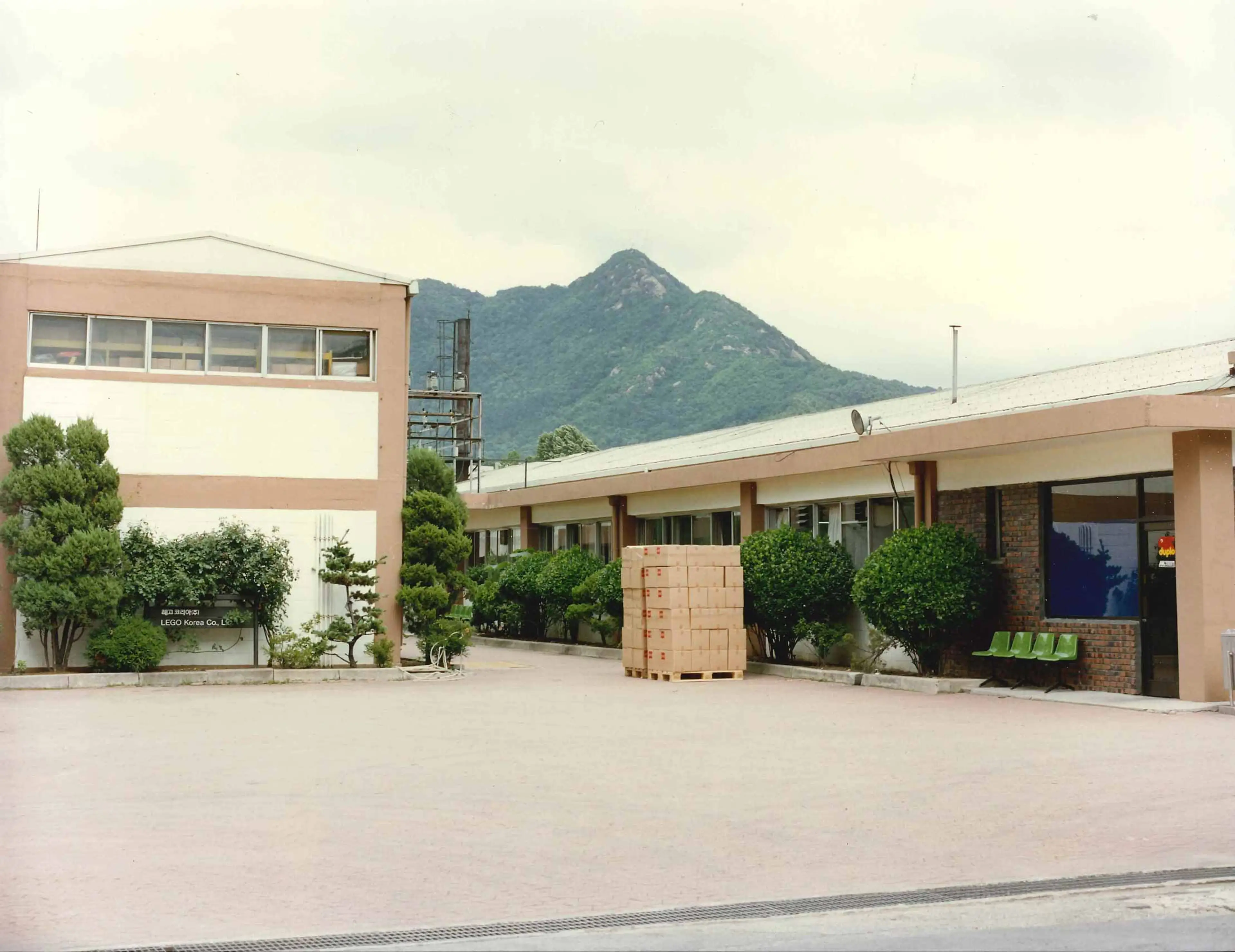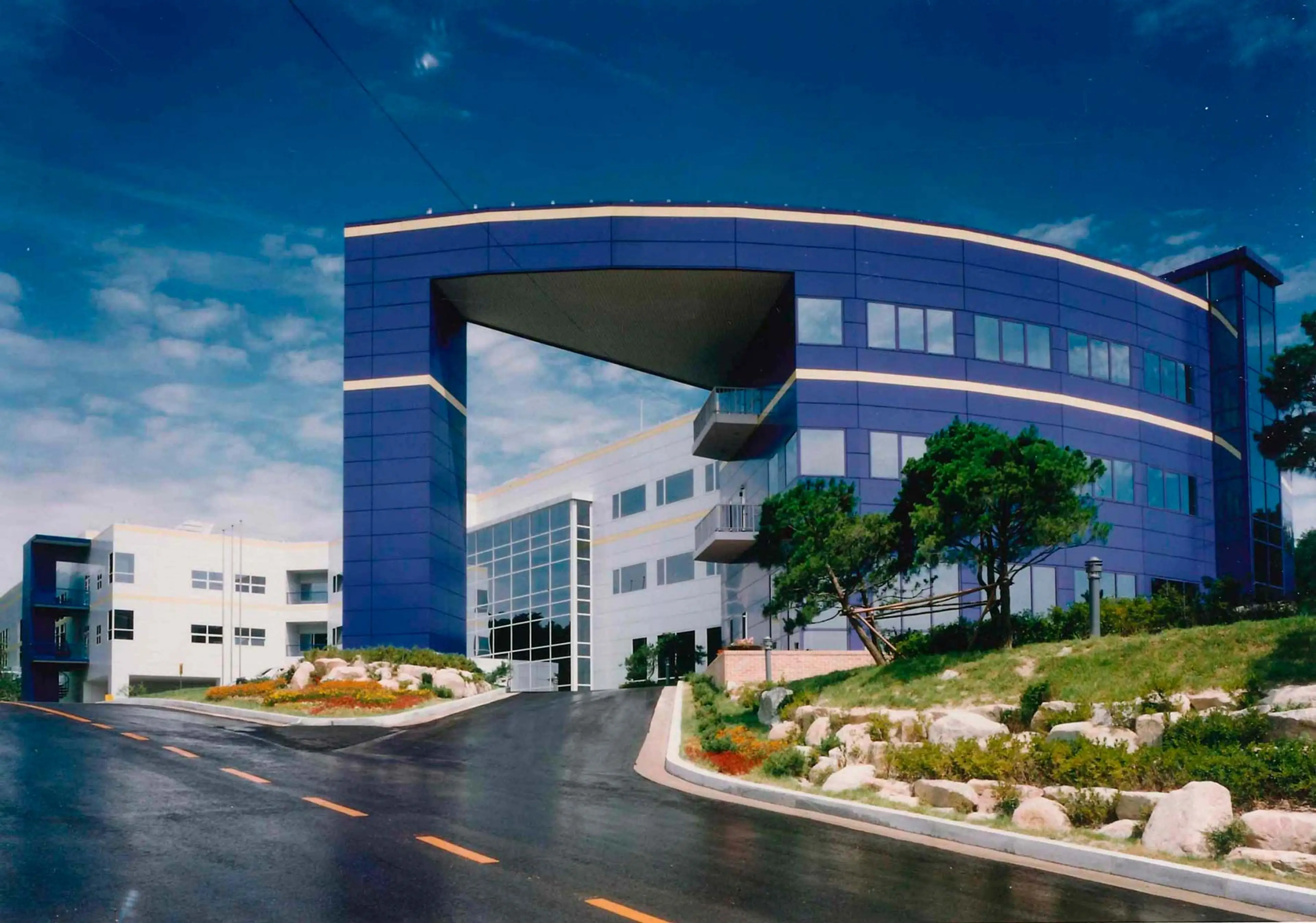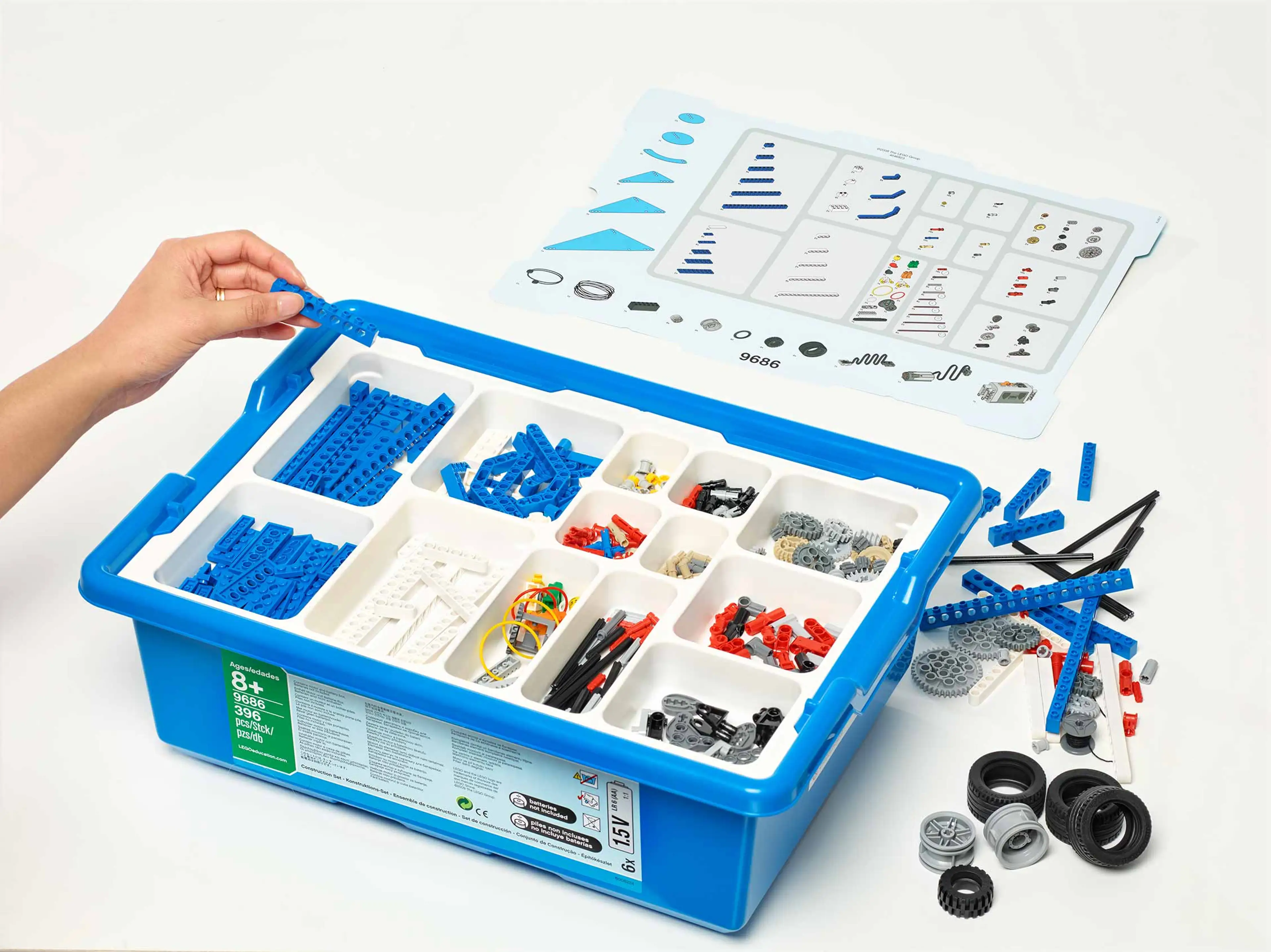The LEGO Group set up production in South Korea in 1985 and for the next 20 years, LEGO® bricks are produced in Korea, at first in Kunpo and subsequently Icheon.
The Kunpo factory
In 1985, the LEGO Group opens its first factory in South Korea. The 3,700‑m² plant at Kunpo is sited approx. 25 km south of Seoul. The first locally molded LEGO element, a red 2x4 brick, rolls off the production line on March 27.

The LEGO factory in Kunpo, 1985
The LEGO Group’s decision to set up molding in South Korea is reached for several reasons. The company observes an economic development in this part of Asia, which can increase its share of the market. At the same time international competition, with the appearance of more imitation products, may well spread beyond South Korea. A South Korean product, COKO, a copy of LEGO products, is already gaining ground in Korea.
The fact that a company must set up local production in order to enter the market in this part of Asia is also a contributing factor for the decision.
The early campaign in South Korea are not easy for the LEGO Group. With COKO already on the market, it is difficult for LEGO products to establish a presence. Initially, LEGO products are actually assumed to be copies of COKO, not vice versa!
In 1988, activities in South Korea begin to make headway, thanks in large part to a massive marketing and sales push. The people of South Korea gradually become aware of the qualities of LEGO products, sales increase and the Kunpo factory is kept busy.
The Icheon factory
In October 1996 a new 17,500‑m² factory and warehousing facility is opened in Icheon, south of Seoul. All LEGO production in South Korea, both molding and packing, is now concentrated at the new plant.

The Icheon factory is inaugurated in October 1996
The factory in Icheon closes on June 30, 2005 - 20 years after molding of the first South Korean LEGO brick. The factory closure is necessary under the company’s austerity programme. The molding and packing installations at the Icheon factory transfers to Europe and the factory is put up for sale.



